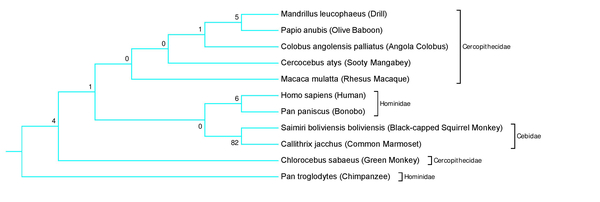Evolution of Neuroplastin-65
(1) Saint George's School, Spokane, Washington
https://doi.org/10.59720/16-049
Variation in the protein neuroplastin-65, encoded by the NPTN gene, correlates with intelligence in humans, but how did it evolve? This study investigated how this gene’s evolution differed between various organisms. This topic naturally lent itself to evolutionary phylogenetics; a phylogenetic tree of the gene was created to trace the evolution of the gene. We hypothesized that the pattern of mutations in the gene would mostly correlate to the accepted evolution of animals, especially among primates where intelligence is under significant selective pressure (1, 2). The data used published results from forty-eight different organisms’ gene sequences. The computer analysis produced a phylogenetic tree that reasonably matched the hypothesis. Neuroplastin mostly evolved along with the individual species, as is evidenced by significant correlations between the neuroplastin tree and other researchers’ phylogenetic species trees. Specifically among primates, the data suggest that the gene was under purifying pressure, as hypothesized. However, the impact of this conclusion is limited because the primate subtree branches are poorly supported. Interestingly, among bony fish, there appears to be either positive selection or no selective pressure on this gene. Furthermore, fish neuroplastin genes may be experiencing convergent evolution with mammal neuroplastin genes.
This article has been tagged with: